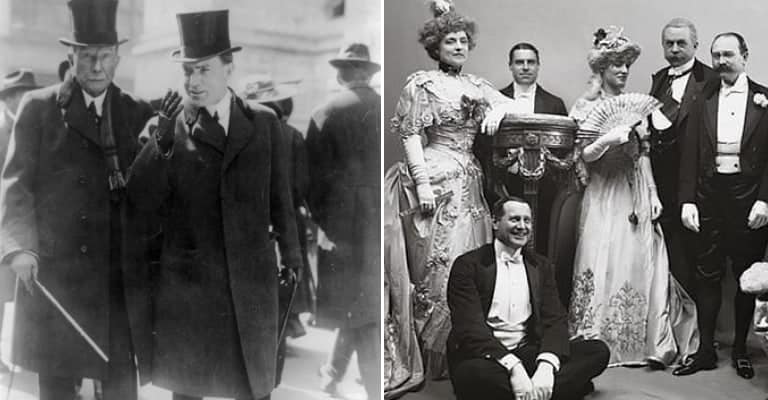The late 19th century in the United States was a period of rapid change which affected all elements of American life. Cities began to grow upwards as well as outwards. The railroads became the engine of the national economy, which grew to become one of the strongest in world. The railroads became attractive investments for overseas speculators, by 1890 British investments in American railroads was its greatest of any in the world, including its own on the African continent and the Indian subcontinent. Immigration boomed. Farming became commercially viable as an industry. Electrification of cities and eventually remote rural areas moved at a pace unforeseeable only a few years earlier.

From roughly 1870 -1900, though some historians date the beginning and end of the Gilded Age more loosely, American class divides deepened. The wealthy, with no income tax to hinder them, built vast estates while the urban working class struggled to eke out a meager living. A middle class began to emerge as employers, again following the example of the railroads, began to create what became known as career paths for workers. Engineering schools established at many of the land grant colleges and universities produced civil, mechanical, and electrical engineers who created innovations which changed the American landscape. By the end of the Gilded Age the United States was a world power, economically, militarily, and internationally. Here are some of the events and facts about the Gilded Age in the United States.

1. The railroads changed American industry, agriculture, and corporate culture
When the Transcontinental Railroad opened in 1869 it was possible to travel from New York City to San Francisco in the theretofore unheard of time of six days. Shippers and passengers flocked to the railroads and the railroads expanded rapidly to accommodate them. As they expanded their routes and enlarged their fleets, the railroads introduced an innovation to American industry, a path which clearly delineated the projected career of an employee with the company, including the expected time to be spent on each rung of the corporate ladder. A new term entered the corporate lexicon – middle management. The system was applied to both blue collar labor and to white collar administration and technical paths.
The expansion of the railroads also drove the steel industry, which in addition to providing the rails adopted the career paths pioneered by the railroads for their own employees, adjusting them to accommodate the emerging labor movement as necessary. By the end of the Gilded Age, around 1900-1910, American steel output exceeded that of Great Britain, France, and Germany combined, with productivity levels enhanced by the new type of personnel management which had originated with the railroads. Men (few women were subject to career paths) could reasonably estimate what their income would be in the future, rather than rely on a set wage indefinitely, and plan their futures accordingly. The American middle class was born.

